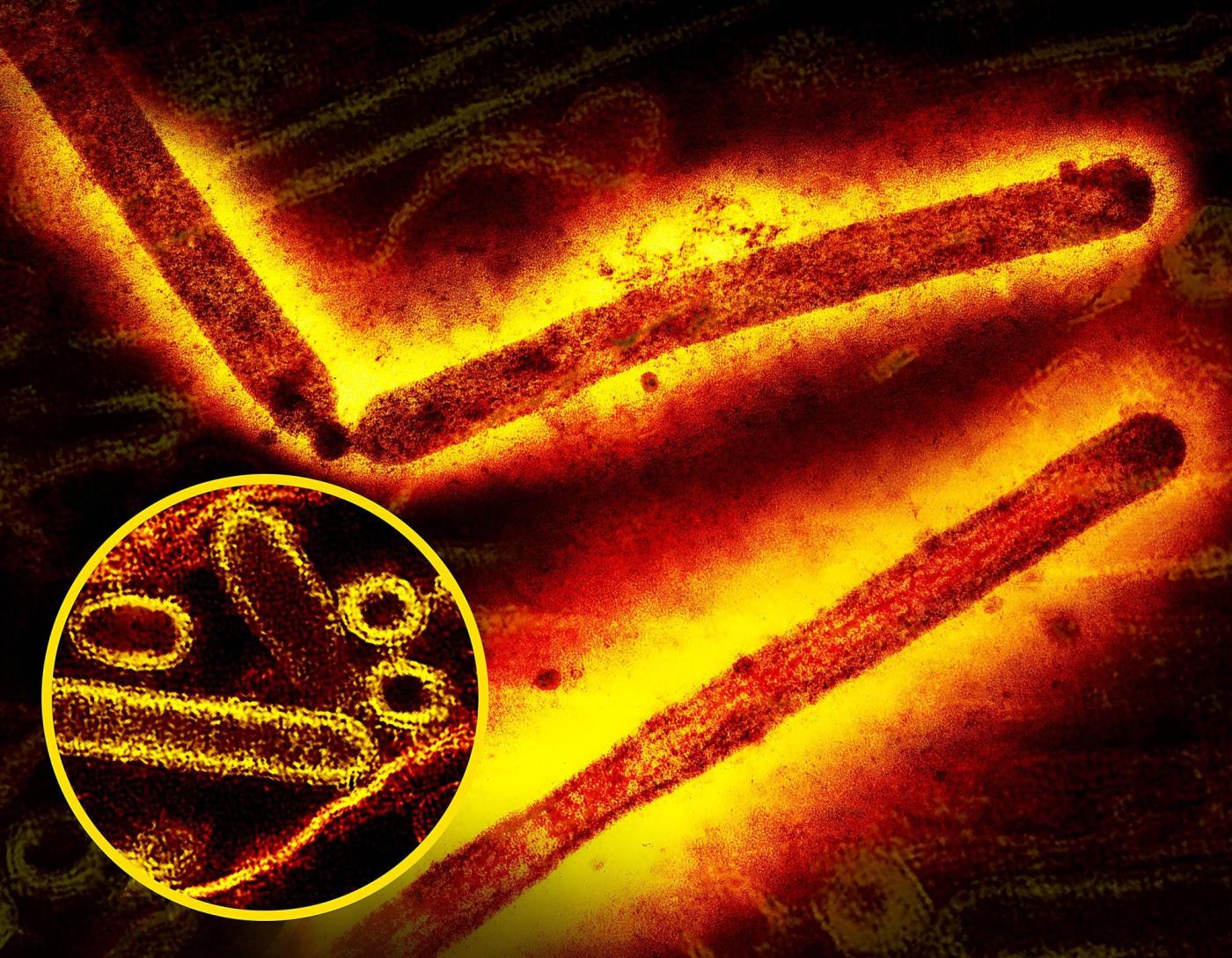
A rare but often fatal complication of the flu is on the rise among young children.
A new study warns that cases of acute necrotizing encephalopathy (ANE) – which causes severe brain swelling – are increasing.
The paper, authored by 61 researchers from institutions across the country, including Stanford University, reports that children ages 1 to 10 are most vulnerable to the disease.
Related Articles
Opinion: Bay Area doctors warn of danger from RFK Jr. assault on vaccines
Many forget the damage done by diseases like whooping cough, measles and rubella. Not these families
Why Americans’ access to lifesaving vaccines is threatened by RFK Jr. overhaul
Trump administration cancels $766 million Moderna contract to fight pandemic flu
Moderna study shows immune response in older adults for a combo flu and COVID-19 shot
“We describe what’s the largest US cohort to date of acute necrotizing encephalopathy cases, and they all come from the past two flu seasons,” said Keith Van Haren, a pediatric neurologist at Stanford’s Lucille Packard Children’s Hospital who co-authored the study. “ANE is the most severe tip of the iceberg for the kinds of things that [the flu] can do.”
According to Van Haren, Packard Children’s Hospital usually treats one ANE case every one to two years. However, during the 2024-25 flu season — in which hospitalizations for the flu reached their highest levels in 15 years — the hospital treated four people, and Van Haren and his colleagues heard of similarly anomalous numbers from hospitals across the country.
While millions of children are afflicted with the flu each year and most experience some encephalopathy – or brain swelling – as a means of fighting off the infection, children with ANE suffer such severe swelling that they may experience a cerebral herniation, in which brain matter pushes through the skull. The median age of children with the disease is 5, and most children with ANE were healthy, with no significant medical history, beforehand.
In their research, Van Haren and his colleagues found that 27% of children who came to the hospital passed away from the disease, 90% of them from cerebral herniations. For many of the rest, the road to recovery was arduous, but promising.
“It’s really getting through those first seven days that is critical,” he said. “Getting kids through that first week, which is really perilous, gives them a chance at having a decent outcome.”
Those who survived the first week, the study found, were likely to survive the disease overall, though 63% had “moderate to severe disabilities” including inabilities to sit, stand, or walk independently three months after they became sick.
“The recovery from acute necrotizing encephalopathy is comparable to that of a traumatic brain injury,” he said.
Van Haren said children with ANE typically exhibit high fevers after catching the flu, coupled with sudden changes in alertness or behavior like extreme drowsiness at abnormal times of day like the afternoon.
If these signs present, Van Haren said, and parents feel like something isn’t right, they should rush their children to the emergency room or urgent care immediately. Rapid treatment, he said, is key.
“The symptoms can develop incredibly quickly,” he said. “It’s possible to go from drowsy to life-threatening in a matter of a couple of hours.”
When children come to the hospital with ANE, they are almost always shuttled off to intensive care, where they lay for a week or more. Doctors usually inject steroids or replace blood plasma in an attempt to lessen the swelling.
While these treatments have proven effective at stemming fatal cerebral herniations in most cases, Van Haren said more research needs to be done to determine the best line of treatment.
The disease’s causes are a mystery. That said, Van Haren said he and his colleagues are investigating differences in the protein RANBP2, which is found at the center of every cell in the human body. The protein, he said, likely carries some genetic susceptibility to the disease, but not one that is yet detectable.
“There are people living totally normal, healthy lives, and something like this happens, and then they find out that this may be present in their family,” he said. The disease, he said, is autosomal dominantly inherited, which means only one parent needs to carry its gene for it to be passed down.
Van Haren noted that susceptibility to the flu itself was likely a key risk factor. Only 16% of kids diagnosed with ANE had received a flu vaccination within the past year, compared to 49.2% of children overall.
“Among the 38 patients with available vaccination history, only six of them were fully vaccinated against the flu,” he said. “It’s typically 40 to 50%, and so 16% is a much smaller number that suggests that kids who are not fully vaccinated are at higher risk.”
In addition, Van Haren noted that while the majority of children who checked into hospitals across the country with the disease were white, Asian children were slightly overrepresented, and the disease itself is more common in parts of East Asia.
“It’s not clear why that is, but there does seem there is something to kids of Asian descent being at higher risk,” he said.
Overall, Van Haren had two messages, to parents and to physicians.
“The takeaway for parents is to be sure their kids are vaccinated against the flu,” he said. “The flu includes things that are much worse than just fever and aches and chills.”
Van Haren said he hoped that the paper would spur hospitals to develop more effective protocols to diagnose and immediately treat the disease, given its ability to get “very serious, very fast.”
“And for clinicians, I’d say the takeaway is this: don’t give up on these kids just because they are severely impacted,” he said. “The recoveries, in some cases, can actually be better than expected. Intensive care up front may pay dividends.”